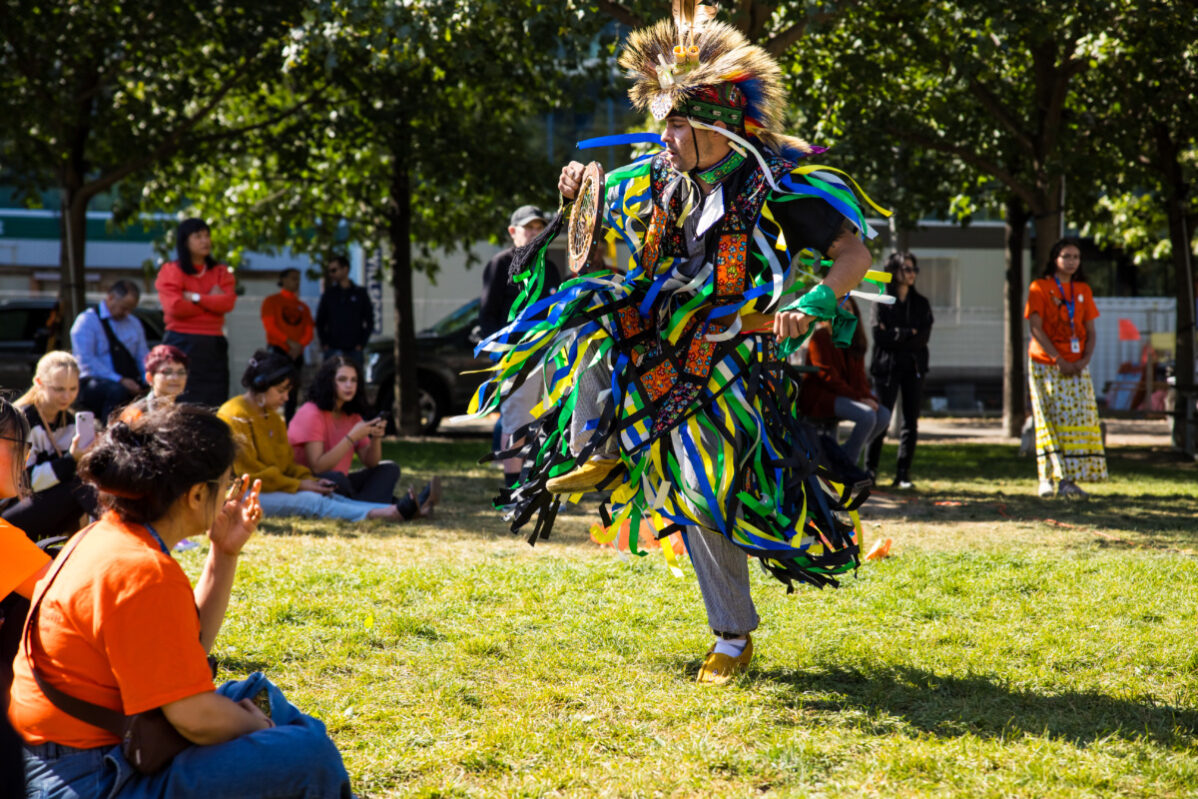Sacred fire ceremony returns to GBC to commemorate Orange Shirt Day
National Day for Truth and Reconciliation, also known as Orange Shirt Day, prompts Canadians to reflect on the of residential schools.
George Brown College (GBC) marked this pivotal day with another Sacred Fire Ceremony, an event deeply rooted in Indigenous traditions and spiritual practices.
“Residential schools [were] starting way back in the 1800s, aimed to assimilate the ‘Indian’—a term referred to Indigenous peoples in Canada. Essentially, the goal was to remove them from their culture and assimilate them into society so they could be the lowest level of workers in society,” explained Cassandra Carlson, student support specialist with GBC’s Indigenous Initiatives.
“Today, over 12,000 graves have been found at Turtle Island. As more are discovered, we must continue to honor and remember the survivors still here with us because there will come a time when the survivors aren’t here anymore. If we don’t relay this truth in these stories, then it will be gone.”
The residential school system in Canada officially ended with the closure of the last school in 1996. The National Day for Truth and Reconciliation, observed on Sept. 30, was established as a call to action to recognize this deep-rooted pain it caused.
To continue with reconciliation, GBC plans to take additional steps to support Indigenous groups.
“This year’s Indigenous Peoples Day marked the one-year anniversary of the memorandum of understanding GBC signed with our treaty partner, the Mississaugas of the Credit First Nations. We have continued to implement our Indigenous Education Strategy that was developed together with Indigenous staff and students here at GBC. Our land acknowledgement is proudly displayed on campus, and we have had the Mississaugas of the Credit First Nation present the GBC Indigenous Initiatives star blanket to campus entrances across the college,” said Michael Herrera, senior VP of institutional planning & CFO with the college.
During the ceremony, participants showcased various traditional dances, including the eagle dance, all while engaged in the special ritual of the sacred fire.
Carlson explained further how students can support Indigenous communities.
[Students] can sign up for our Indigenous Initiatives newsletter and get access to all our upcoming events that we have ones for Indigenous students and one better health for the whole GBC community. Second would just be connecting to some of the Indigenous organizations in Toronto, whether it’s the Native Canadian Centre or other organizations. Just ask what you can do to get involved, whether it’s volunteering, whether it’s connecting with different elders, just offering your services or just listening.”
For additional information or to engage with the community, students are encouraged to explore the Indigenous Education Strategy website.


